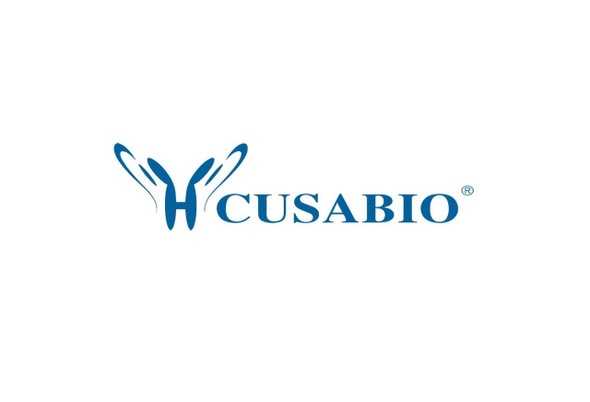Cusabio Active Proteins
Recombinant Human Fibroblast growth factor 9 (FGF9) (Active) | CSB-AP003811HU
- SKU:
- CSB-AP003811HU
- Availability:
- 5 to 10 Working Days
Description
Recombinant Human Fibroblast growth factor 9 (FGF9) (Active) | CSB-AP003811HU | Cusabio
Protein Description: Full Length
Alternative Name (s) : Fibroblast Growth Factor 9; FGF-9; Glia-Activating Factor; GAF; Heparin-Binding Growth Factor 9; HBGF-9; FGF9
Gene Names: FGF9
Research Areas: Signal Transduction
Species: Homo sapiens (Human)
Source: E.coli
Tag Info: Tag-Free
Expression Region: 1-208aa
Sequence Info: MAPLGEVGNYFGVQDAVPFGNVPVLPVDSPVLLSDHLGQSEAGGLPRGPAVTDLDHLKGILRRRQLYCRTGFHLEIFPNGTIQGTRKDHSRFGILEFISIAVGLVSIRGVDSGLYLGMNEKGELYGSEKLTQECVFREQFEENWYNTYSSNLYKHVDTGRRYYVALNKDGTPREGTRTKRHQKFTHFLPRPVDPDKVPELYKDILSQS
Biological Activity: The ED50 as determined in a cell proliferation assay using Balb/3T3 mouse embryonic fibroblast cells is less than 5 ng/ml.
MW: 23.44 kDa
Purity: Greater than 95% as determined by SDS-PAGE.
Endotoxin: Less than 1.0 EU/µg as determined by LAL method.
Relevance: Fibroblast Growth Factor 9 (FGF-9) belongs to the Fibroblast growth factor (FGF) family. FGF family members possess broad mitogenic and cell survival activities, and are involved in a variety of biological processes, including embryonic development, cell growth, morphogenesis, tissue repair, tumor growth and invasion. FGF-9 plays an important role in the regulation of embryonic development, cell proliferation, cell differentiation and cell migration. In addition, FGF-9 may have a role in glial cell growth and differentiation during development, gliosis during repair and regeneration of brain tissue after damage, differentiation and survival of neuronal cells, and growth stimulation of glial tumors.
PubMed ID:
Notes: Repeated freezing and thawing is not recommended. Store working aliquots at 4℃ for up to one week.
Function: Plays an important role in the regulation of embryonic development, cell proliferation, cell differentiation and cell migration. May have a role in glial cell growth and differentiation during development, gliosis during repair and regeneration of brain tissue after damage, differentiation and survival of neuronal cells, and growth stimulation of glial tumors.
Involvement in disease: Multiple synostoses syndrome 3 (SYNS3)
Subcellular Location: Secreted
Protein Families: Heparin-binding growth factors family
Tissue Specificity: Glial cells.
Paythway: MAPKsignalingpathway
Form: Lyophilized powder
Buffer: Lyophilized from a 0.2 μm filtered 20 mM PB, 150 mM NaCl, 5% Trehalos, pH 7.4
Reconstitution: We recommend that this vial be briefly centrifuged prior to opening to bring the contents to the bottom. Please reconstitute protein in deionized sterile water to a concentration of 0.1-1.0 mg/mL.We recommend to add 5-50% of glycerol (final concentration) and aliquot for long-term storage at -20℃/-80℃. Our default final concentration of glycerol is 50%. Customers could use it as reference.
Uniprot ID: P31371
Uniprot Entry Name:
HGNC Database Link: HGNC
UniGene Database Link: UniGene
KEGG Database Link: KEGG
STRING Database Link: STRING
OMIM Database Link: OMIM









